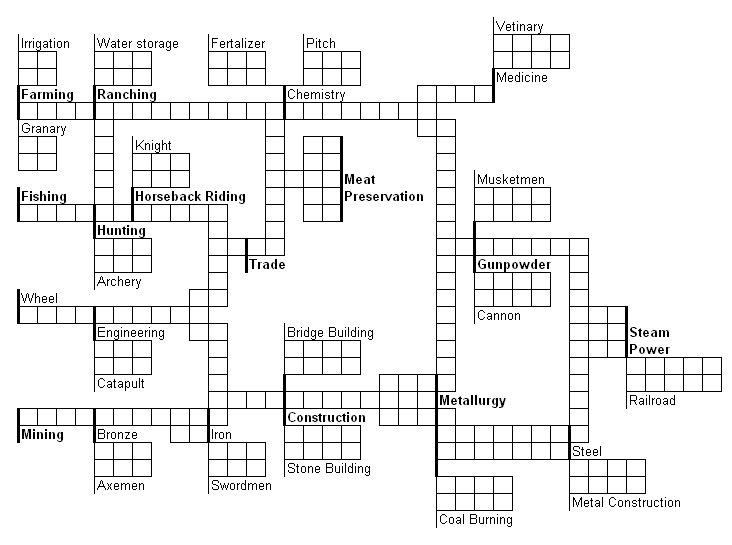Two types of buildings:
- City State centres
- Other
City State centres occupy a contiguous block of tiles of a certain shape with specific terrain requirements, When upgraded to a larger city centre the new location may not be more than one tile removed from the prior location. Each type/scale of city centre comes with a range. All contiguous buildings (contiguous with the City Centre) within that range or which are connected by state own transports to contiguous buildings within that range, are part of the City State.
Other buildings are production buildings. They are of three types: buildings Producers, Translators and Money Producers (need a better name for this one).
Producers accept no inputs and produce whatever it is they produce. This process is identical to the farms and shepherd shacks in Neuland.
Translators accept a specific mix of inputs of specific types of products and in return output of a product of yet another type. This process is identical to most of the buildings in Neuland.
Money producers accept a specific mix of inputs of specific types of products and in return give the moving player abstract money in their account.
Physically buildings consist of one or more contiguous tiles with terrain limitations. Contiguity will usually require tiles sharing edges but in certain very limited cases may be defined by sharing corners or even by range measurements. Uncertain.
Building tiles are placed on terrain tiles.
Product markers are placed on building tiles. Typically there may be only one product marker per building at any one time, no matter how many tiles the building covers. Some special few buildings may accept multiple product markers (function of tech level?).
Some buildings produce transports given the right inputs. Thus a stable that is adjacent to a paddock may accept food etc as inputs and output horses. Similarly shipyards produce ships, wainwrights produce wagons etc. The produced transports are owned by the city state. The producing player is rewarded with investment value in the city. The producing player may move the transports out from the production centre, and in fact all the transports of that type that are members of a set contiguous with that production centre with the following constraints:
- No more than N transports may occupy a production site.
- Transports may be moved off the production site
- Different transports have different terrain limitations. Those limits may be how many may occupy a given terrain type, if they may share the terrain type with other transports, with other buildings, or the total number of things that may also be present on the tile (crowding).
- Every moved transport must be able to trace a parth from its location, through other transports of the same type, owned by the same City State, to a production site for transports of that type owned by the same City State.
- A chain of transports joining two production sites of that type of transport may never be broken by the City State that owns the transport. The chain must remain. Other City States may attack the chain and break it, in which case the original City State has one turn in which to reconnect the disconnected transports before their ownership transfers to whichever City State owns the production site they are connected to.
- Transports which connect two production sites may still move, perhaps to join yet other production sites, but may not in the process sacrifice connections previously gained.
- Should a connection be removed by the owning City State destroying or losing that production site then the transports may move away freely.
Players may move products over transports to buildings in connected (or same) City States. Such movement requires payment for use of the transport to the owning City State. The product must continue to move off the transport to a building which can accept it for production. Any required fees for this additional movement must be paid.
Remember, players don’t own transports or buildings, cities do.
Different transports have different capacities. Transports cannot carry loads of too high (or low) a tech level. They are also limited in capacity. This limits the transfer bandwidth between cities.
Orchestration of transport logistics and timing is expected to be significant to good play.
